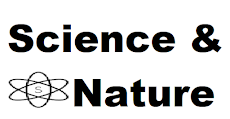When astronomers initially detected ʻOumuamua passing through our solar system in 2017, it captured global interest. A foreign object from outside our solar system—our first recorded interstellar visitor—ʻOumuamua was unlike anything scientists had previously encountered. Its unusual, cigar-shaped appearance, absence of a discernible tail, and peculiar acceleration triggered considerable speculation, up to and including the idea that it could possibly be an alien probe.
Among the people fascinated by ʻOumuamua was theoretical physicist Dr. Michio Kaku, renowned for his string theory and science commentary. But as the world continued to grapple with the enigma of this alien space traveler, Kaku suggested an even more interesting hypothesis: this wasn't the first of its kind to venture into our solar system—it was just the first we saw.
A Cosmic Wake-Up Call
We now realize space is filled with these interstellar intruders," Kaku stated in an interview last week. "ʻOumuamua was an eye-opener. The fact that we caught it means we've probably missed hundreds of thousands more. Our equipment is only just getting sensitive enough to pick them up.
Kaku contends that the fact that space is so enormous, and that these objects are relatively small and faint, makes them extremely difficult to detect. The majority of them simply zip past, unseen, merging into background noise. ʻOumuamua just so happened to come close enough to the Sun—and reflect enough light—to be detected by the Pan-STARRS telescope in Hawaii.
"Statistically, it's unlikely that this was the first interstellar object to visit us," Kaku said. "It's just the first one we had the capability to see."
A New Field of Study
Since ʻOumuamua, astronomers have verified the detection of a second interstellar visitor—comet 2I/Borisov in 2019. Unlike ʻOumuamua, Borisov appeared and acted more like a standard comet, supporting the notion that interstellar objects could be more prevalent than we previously thought.
Kaku believes we’re on the brink of a new era in astronomy, one where detecting and studying these interstellar visitors becomes routine. “In a few years, we’ll have telescopes powerful enough to catalog many of these objects,” he said. “And who knows what we’ll find? The possibilities range from planetary debris to technological artifacts.”
Still Open to the Alien Hypothesis
While most scientists are inclined toward natural causes for ʻOumuamua, Kaku has kept an open mind to more sensational options. "I'm not saying it was an alien probe," he's told us, "but it didn't act like any comet or asteroid we've ever seen. Science starts with open-mindedness. If we rule out too quickly unusual phenomena, we may miss something gigantic."
He points out that science has to be led by evidence, but also by curiosity. "We have to be careful not to let assumptions blind us to the unknown," Kaku said. "ʻOumuamua taught us that the universe still has secrets. We just have to keep looking."
Looking to the Future
NASA and other agencies are already laying out plans to send missions and design observatories to monitor upcoming interstellar objects. Some even dream of catching one with a spaceship, gathering data directly or bringing back samples.
For Kaku, the quest is not only scientific. It's intellectual. "These visitors remind us how small we are—and how vast and mysterious the cosmos truly is. They challenge us to think bigger, to explore farther, and to stay humble in the face of the universe."
As technology improves and our cosmic vision sharpens,
one thing seems certain: ʻOumuamua was just the beginning. We’re only now
opening our eyes to the deep currents of interstellar space—and what drifts
within them.




.jpg)
0 Comments